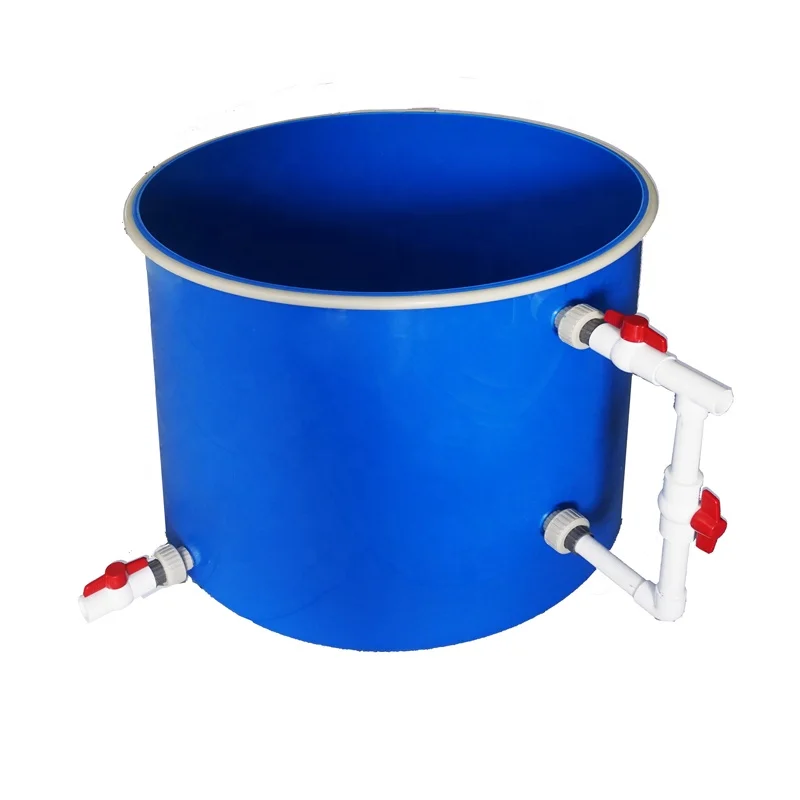In recirculating aquaculture systems, also known as RAS, the method of raising tilapiais with a way that is sustainable and very efficient in fish farming. Aquaculture producers are increasingly turning to RAS designs as they manage increasing global demand for tilapia, aiming to maximize growth rates through optimal water conditions and improved profitability. Selecting the right RAS for your system is no small feat; it requires a profound understanding of tilapia biology, state-of-the-art technology and economic viabilities. In the following article, we discuss essential elements in defining RAS technology high points, choosing top-performing RAS technologies, producing cost-effective decisions to incorporate state-of-the-art advances and what can be learned from useful examples that help tilapia producers make all-important informed choices when it comes to effective farm solutions.
Features that drive optimal growth of Tilapia in RAS Systems
The design of the RAS in its optimal size starts by considering what are really the needs for tilapia. This includes things like good filtration (to keep water quality high), temperature control to be kept 25-30°C, and stocking densities that are low enough not to cause stress or disease outbreaks. It is an essential factor; therefore a good biofiltration method consisting of mechanical filtration to remove solid waste and biological filtration to convert the toxic ammonia into less harmful nitrates can not be ignored. Also, paying attention to dissolved oxygen monitoring and control systems ensures that tilapia get the proper amount of gases they need for growth.
Choosing Best RAS Technology Guide
When picking RAS technology, see if it can scale as needed and is energy efficient with automation benefits. You should also be considering scalability - this means building your farm in such a way that as the market grows, or shifts you wont have to change out everything for new systems. Energy-efficient harvesting components such as variable frequency drives (VFDs) on pumps can cut operational costs drastically. For example, computer-based control systems are used to automatic real-time monitoring and adjustment of water parameters so as to replace part of the human labor force on one hand; And for another thing, this technology will be design a more accurate responding mechanism when encountering with environmental changes. Similarly, it is very important in the long run to choose suppliers which have many years of experience with RAS innovation and after that technical maintanance.
Best Value RAS for Tilapia farm
The sustainability of RAS depends on economic factors. Determine the startup costs, operating expenses and a rough idea of returns on investment using cost benefit analysis. Think about phased expandable, modular systems to reduce the initial CAPEX. As noted earlier, efficient use of energy is one arm that can help to bring the running cost down. Additionally, look for government grants or subsidies in place of low-interest loans to encourage the uptake of sustainable aquaculture practices that offset early capital burdens. Rely on site-specific experienced consultants to recognize low hanging fruit opportunities for savings without negatively impacting system performance.
Use of Modern Technologies in RAS Systems to Increase Tilapia Yields
Advances in RAS technology are taking place at a fast pace, and implementing these new developments can make a huge difference to any tilapia operation. These include, for example, using Internet of Things (IoT) device capabilities to monitor and control system parameters easily from a distance. Tilapia strains can be intensified for rapid growth, disease and feed efficiency through advanced genetic selection. These lights provide natural light for imitating day-night cycles, boosting feeding behavior and growth. Additionally, other feeds - for example insect-based proteins systems compared to conventional fishmeal - can cut money and the environmental impact of production.
RAS-based Tilapia Grow Factories: Some Case Studies and Best Practice Recommendations
If You are Out of LuckThere Is Always a Silver LiningIn the process, however, one learns plenty from those that succeed using RAS as tilapia farm. Examples are endless, the Bluehouse by Atlantic Sapphire is one of them who uses a RAS system to produce (1000's upon 1000's ton) salmon on land in Florida but has acquired other technology that has been used with tilapia. The success of these companies highlights the critical role that advanced filtration, energy management and precision environmental control play in tight temperature specifications. Turkey-based Fish Farm 2 in Dubai connects RAS to solar power not only for mitigating energy billing, but also maintaining the best conditions for tilapia growth. These cases illustrate the acute value of advancing renewable energy systems, smart farming solutions and more informed management practices across really any business.
In summary, the search of an optimised RAS system for a tilapia grow factory is very complex and must have taken into account this balance between high technology performance with its investment costs/ O&M requirements... but on paper you also need to talk/specify by heart about what happens inside your business if deigned marginal biological behaviour too.. Farmers need to adopt efficient and profitable RAS technology by sticking to the basics required for growth, choosing better but cost-effective instruments as per requirements of advancement in new technological trends, technologies or systems well-implemented elsewhere.

 EN
EN
 AR
AR
 BG
BG
 HR
HR
 CS
CS
 DA
DA
 NL
NL
 FI
FI
 FR
FR
 DE
DE
 EL
EL
 HI
HI
 IT
IT
 JA
JA
 KO
KO
 NO
NO
 PL
PL
 PT
PT
 RO
RO
 RU
RU
 ES
ES
 SV
SV
 TL
TL
 IW
IW
 ID
ID
 SR
SR
 UK
UK
 VI
VI
 HU
HU
 TH
TH
 TR
TR
 AF
AF
 BN
BN
 LO
LO
 LA
LA
 MY
MY
 UZ
UZ

